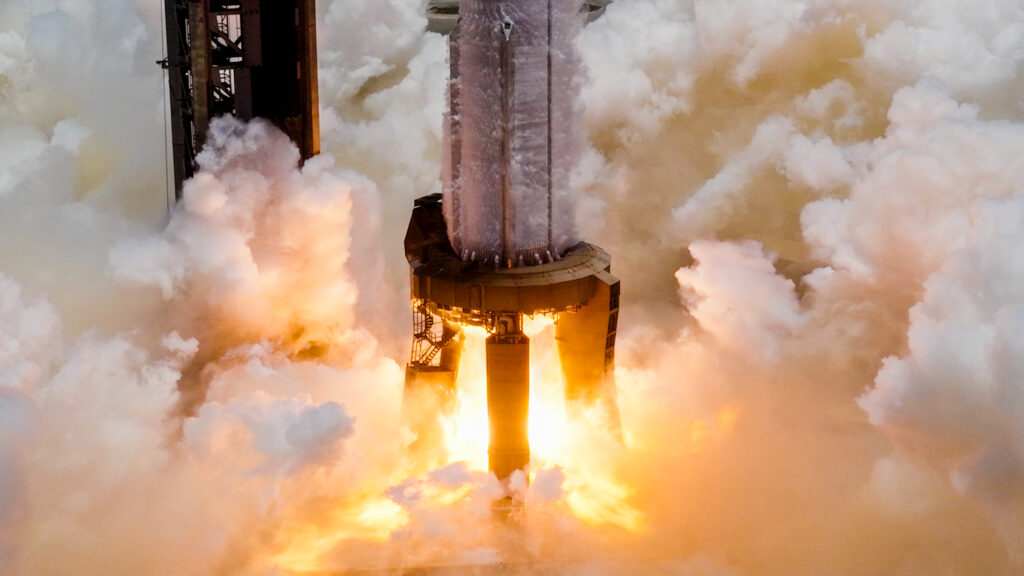Using data from NASA’s now-defunct Dawn spacecraft, scientists have discovered that the dwarf planet Ceres, the second wettest body in the solar system after Earth, could have an interior reserve rich in organic materials — the building blocks of life.
The results hint that Ceres may have enough internal water, organic molecules, and the energy source needed for life to exist on the dwarf planet. Of course, that alone doesn’t suggest the dwarf planet is inhabited.
Dawn was a mission that explored Ceres, the largest object in the main asteroid belt between Mars and Jupiter, and the slightly smaller Vesta. It beamed its last data back to Earth 6 years ago, but prior to that, in 2017, the spacecraft detected organic compounds near the Ernutet crater in Ceres’ northern hemisphere.
Researchers from Spain’s Instituto de Astrofísica de Andalucía used Dawn data to identify 11 more regions on Ceres rich in organic material. This indicated to the team that a reservoir of organic materials exists within Ceres.
With a width of over 578 miles (930 kilometers), Ceres doesn’t quite meet the criteria of a planet, but with its abundant water, it could well qualify as an ocean world.
You may like
That means it is also an object with potential significance in the search for life beyond Earth.
Ceres: Inside and out
There was already heated discussion surrounding Ceres’ origin and evolution, and this discovery may settle that debate.
The problem arises from the fact that organic compounds are rapidly degraded by solar radiation, and if these materials were always on the surface of Ceres, they should have been destroyed or at least have their abundances reduced.
One suggestion proposed that the detected materials were delivered to Ceres via recent impacts of organic-rich comets or asteroids. Another suggests that the organics seen at the surface of Ceres came from within the dwarf planet.
These findings dispute the former theory, suggesting the organic materials come from within the dwarf planet or are “endogenous.”
“The significance of this discovery lies in the fact that, if these are endogenous materials, it would confirm the existence of internal energy sources that could support biological processes,” team leader and Instituto de Astrofísica de Andalucía researcher Juan Luis Rizos said in a statement.

To investigate the organic compounds found on Ceres, the team used a new approach that examined the dwarf planet’s surface and the distribution of organic matter at the highest possible resolution.
Of particular interest were the compounds discovered in a region at the equator of Ceres called the Ernutet crater. Most of the 11 regions discovered in the Dawn data were found in this region toward the equator of Ceres.
The materials in the sites around the Ernutet crater had been exposed to more solar radiation than those in the crater. That degraded the spectral features of the exposed material, making them tougher to spot in Dawn data.

Standing out to the team was a region between the Urvara and Yalode basins of Ceres, which contained the strongest traces of organic materials, which appear to have been dispersed through this region by the asteroid impacts that created these basins.
“These impacts were the most violent Ceres has experienced, so the material must originate from deeper regions than the material ejected from other basins or craters,” Rizos said.
The scientist added that if the presence of organics is confirmed, their origin leaves little doubt that these compounds were created in the interior of Ceres.
And the quantities of the materials detected by the team hint that organic molecules must exist in great amounts below the surface of Ceres.
Ceres: Past, present, and future
The composition of Ceres links the dwarf planets with a family of meteorites rich in compounds of carbon. These fragments of asteroids are called “carbonaceous chondrites” which are thought to be composed of material that existed around 4.6 billion years ago as the planets were forming around the infant sun.
In addition to this, Ceres could be a vital destination for future space exploration.
“Ceres will play a key role in future space exploration. Its water, present as ice and possibly as liquid beneath the surface, makes it an intriguing location for resource exploration,” Rizos explained. “In the context of space colonization, Ceres could serve as a stopover or resource base for future missions to Mars or beyond.”
Related Stories:
These researchers’ findings, suggesting that organic materials were recently released to the surface of Ceres by asteroid impacts, are supported by separate results delivered by a team of Italian scientists.
This separate team found that organic compounds degrade more rapidly under solar radiation than previously estimated.
“The idea of an organic reservoir in such a remote and seemingly inert location like Ceres raises the possibility that similar conditions could exist on other solar system bodies,” Rizos concluded. “Without a doubt, Ceres will be revisited by new probes in the near future, and our research will be key in defining the observational strategy for these missions.”
The team’s results were published in the Planetary Science Journal.



